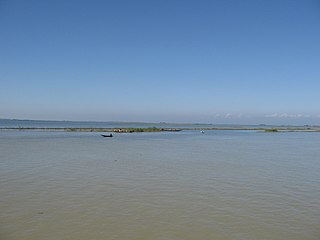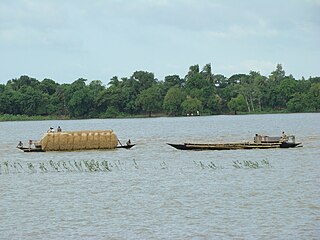 W
WA haor, is a wetland ecosystem in the north eastern part of Bangladesh which physically is a bowl or saucer shaped shallow depression, also known as a backswamp. During monsoon haors receive surface runoff water from rivers and canals to become vast stretches of turbulent water. They turn into a vast inland seas within which the villages appear as islands. Occasional high winds during the rainy season generate large waves in the haor, which may cause considerable damage to homesteads. However they all but dry up in the post-monsoon period. During winter, these haors are vast stretches of green land.
 W
WA beel is a billabong or a lake-like wetland with static water (as opposed to moving water in rivers and canals - typically called khaals in Bengali, in the Ganges - Brahmaputra flood plains of the Eastern Indian states of West Bengal, and Assam and in the country of Bangladesh. The term owes its origins to the word of the same pronunciation meaning "pond" and "lake" in the Bengali and Assamese languages.
 W
WBeel Dakatia or Dakater Beel is the second largest beel in Bangladesh. It is located in Khulna-Jessore region. In the 1980s, this beel became the curse of the people who lived upon this beel.
 W
WChalan Beel is a wetland in Bangladesh. It is a large inland depression, marshy in character, with rich flora and fauna. Forty-seven rivers and other waterways flow into the Chalan Beel. As silt builds up in the beel, its size is being reduced.
 W
WRamsagar, located in the village Tajpur in Dinajpur District, is the largest man made lake in Bangladesh.
 W
WRatargul is known as “Sundarban of Sylhet”
 W
WTanguar haor, located in the Dharmapasha and Tahirpur upazilas of Sunamganj District in Bangladesh, is a unique wetland ecosystem of national importance and has come into international focus. The area of Tanguar haor including 46 villages within the haor is about 100 square kilometres (39 sq mi) of which 2,802.36 ha2 is wetland. It is the source of livelihood for more than 40,000 people. The Government of Bangladesh declared Tanguar haor as an Ecologically Critical Area in 1999 considering its critical condition as a result of overexploitation of its natural resources. In 2000, the hoar basin was declared a Ramsar site - wetland of international importance. With this declaration, the Government is committed to preserve its natural resources and has taken several steps for protection of this wetland.